Pet-Friendly Pest Control
- (541) 636-0146
- Schedule Service
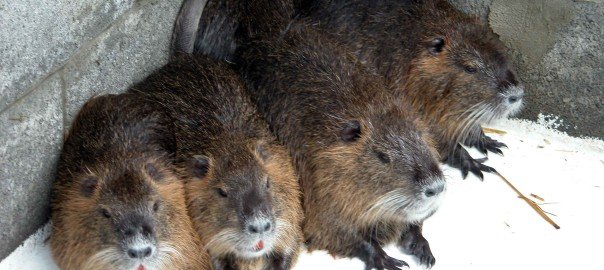
In this third and final part to our series on rodents in the Pacific Northwest, we’ll focus on the outliers, or, those rodents not as commonly encountered in or near our homes. Specifically, we’ll be taking a look at the voles, nutria, and porcupines. Most people will not have domestic run-ins with these critters (though voles can be common in property surrounded by woods or broad fields), but they can still pose a problem and be difficult to handle. Let’s learn a little about these interesting rodents and what makes them tick. There are links within the article that will lead you to places in which you can learn more specifically about trapping, baiting, and exclusion methods for dealing with any of these rodents as problem pests, but for our purposes, we’ll focus more on what they do and what it means to you and your home. Being northwest rodents, gophers could also be included on this list. To that effect, we have an informative article covering gophers here.
Disclaimer: Bug Zapper Pest Control does NOT currently handle problems with nutria, voles, or porcupines. This article is designed to give you some information on these rodents, as well as some advice on how to tackle the problem.
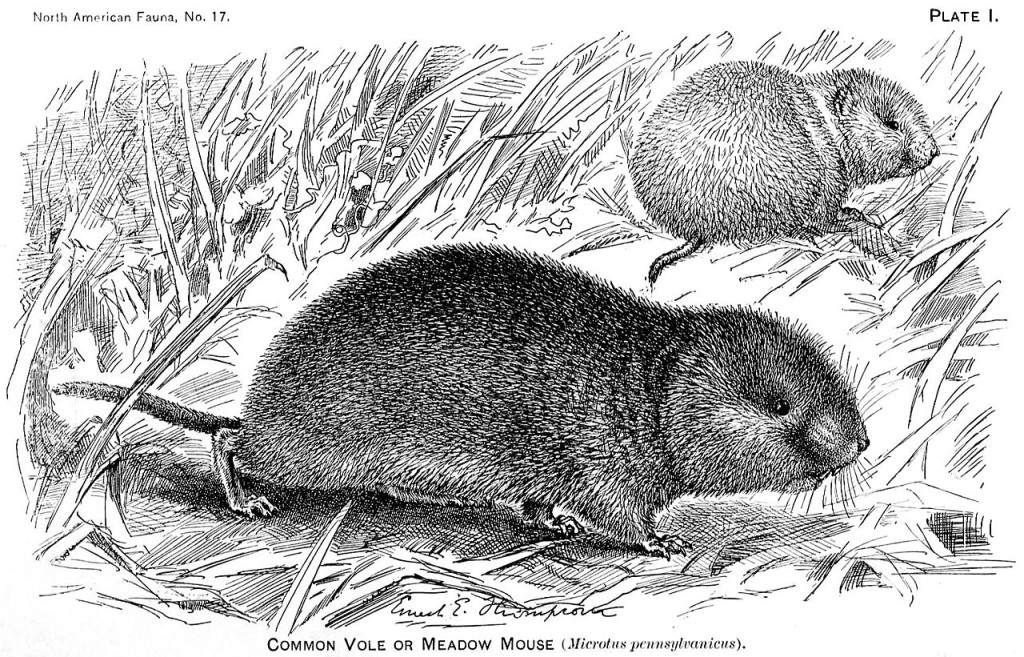
Voles are small, semifossorial (subsisting both below and above ground) rodents that somewhat resemble rats and mice. They are sometimes called Meadow Mice or Field Mice, though are more closely related to muskrats or lemmings than mice. Voles can range in color, though are typically small (a little larger than mice), and have short, mole-like limbs with a stubby tail. They often dig extensive tunnels in yards and especially gardens, through which they travel in search of various foods. When it comes to northwest rodents, voles are the jack-of-all-trades, and can adapt to varying conditions with ease. A common behavior of voles is to dig a series of scavenging tunnels and then travel between them above-ground. If you’ve got a variety of holes in your yard and garden, without the presence of a mound or hill above each hole, you’ve likely got a vole problem. While there are nearly two dozen different types of voles in North America, our customers are most likely to encounter the Oregon Vole (aptly named Microtus oregoni).
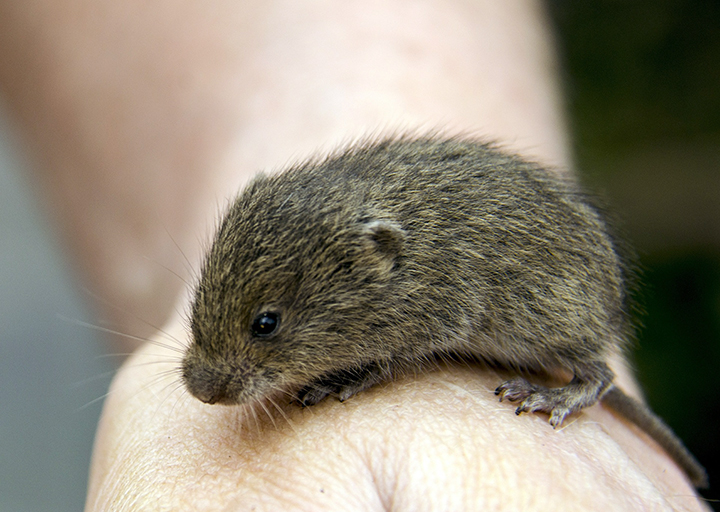
The Oregon Vole is around 5.5 to 6.5 inches long with a bicolored tail that can contain any number of color combinations. Oregon Voles are particolored with the most common coloring a greyish yellow to brownish yellow. They usually have a darker underbelly that will often have areas of yellow or white in it. They do not hibernate, and can be found scavenging any time of the night or day. They tend to propagate in small groups, but have been known to create very large, complex habitats with big populations, too. Generally, they stick to about a fourth of an acre and don’t range much beyond that. They do not typically live long, and have an average lifespan of a little over a year, provided nothing interferes with their activities. They can procreate any time of the year, though prefer Spring and Summer, and are able to breed on average 5 or so times in a year, having between 3-8 young in each litter. Pregnancy lasts about 3 weeks, and the young mature in another 3 weeks. The speed at which they can procreate can greatly boost their numbers when food is plentiful and they are not hindered by location, predators, and weather. They prefer grassy and brushy areas and are far more common in the forested regions of the Pacific Northwest. They also like to infest clear-cut areas, somewhat like open fields. While they prefer plant matter, and will make a buffet of your garden, they also enjoy eating insects and snails, and have even been known to eat dead animals and roadkill.
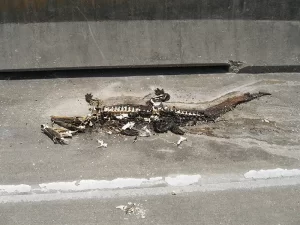
Pest control for voles requires a daily regimen of trapping, or several other methods of control that necessitate frequent attention. There are many ways to control a vole infestation. Trapping can work well on small populations (but not large), baits and/or toxicants can be used, including repellants, and there are ways to protect your young trees and certain plants using exclusion methods. For a good outline of these methods, check out the Internet Center for Wildlife Damage Management, and their information on vole management.
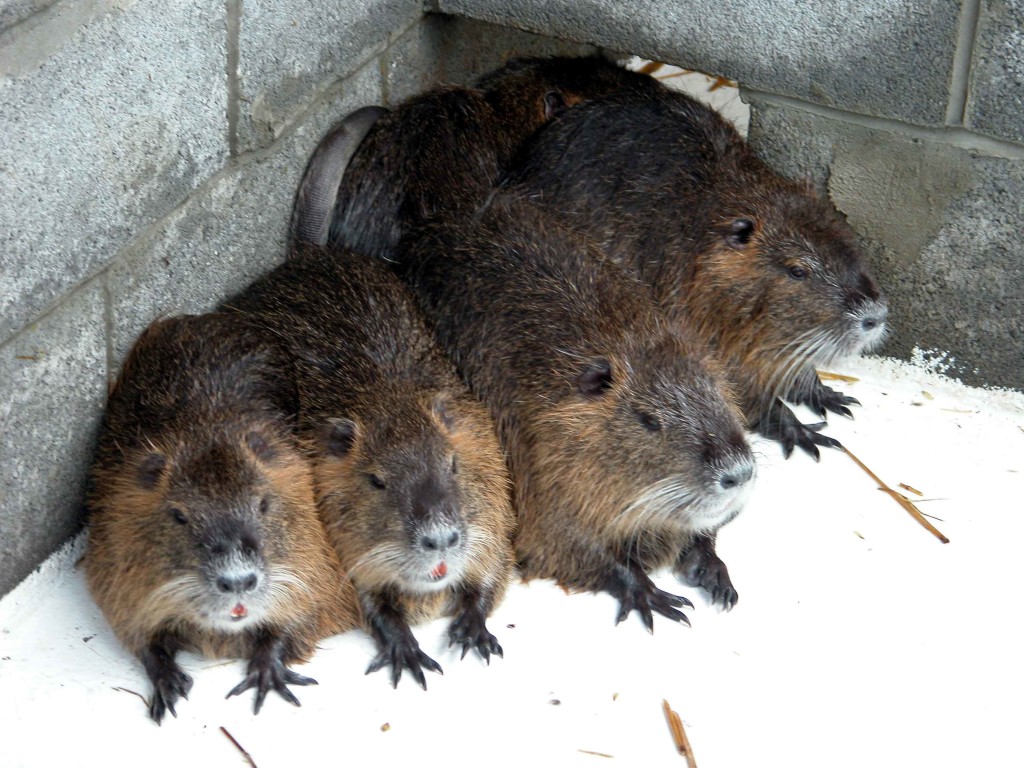
Nutria (or coypu) were not originally northwest rodents, but have done quite well in our more watery ecosystems. Originally South American in origin, nutria were introduced to Oregon in the 1930’s, and as such, are relatively new to the area. Their numbers and prevalence will likely grow over time. They are larger rodents (closer in size to beavers than rats, mice, or gophers) and they can be found usually in areas with rivers and streams, as nutria are semi-aquatic. They are excellent swimmers and are often mistaken for beavers (which are also rodents), due to their body construction, habitat, and size. One key difference visible from a distance is the tail of a nutria. Nutria have bodies that are somewhat beaver-like, but tails that are wiry and long, being much more rat-like. They nest in banks brushy areas, and always near a habitable water-source. While they can adapt to a great many habitats, they definitely prefer, and do better in, freshwater wetlands and marshes.
Nutria are dark-colored and average about 2 feet long. They have bright orange incisors near the front of their mouths, and long whiskers. Cornering a nutria is a bad idea, as they can be quite violent and will bite and claw to get away, usually back to water. Once in, they can remain submerged completely for up to 10 minutes at a time. They are most active at dusk, though will often sunbathe and swim in the late afternoon or early evening.
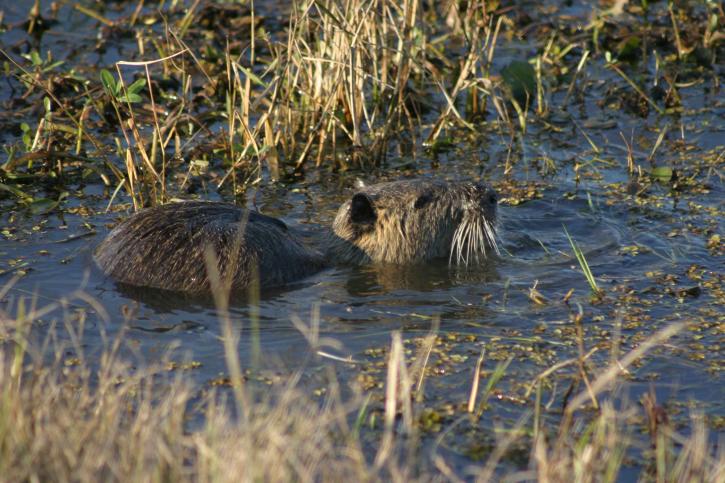
They can damage habitats because of their taste for plants that typically hold soil together, causing stream-banks to crumble and erode faster. The burrowing they do within these banks certainly doesn’t help matters. Nutria often carry parasites that can spread to other animals quickly, and can also carry a number of pathogens that make them dangerous to people and other animals. Oregon state law allows for a variety of trapping/baiting/control methods. For a time, they were considered a food source and there are many nutria recipes online, though the fad has certainly diminished greatly since the 60’s, when it was more popular.
There are several ways to deal with nutria. Oregon law allows for them to be shot if outside city limits, and live-traps can be purchased. For protecting your trees, brush, and property from nutria, fences and wire mesh can work very well, as nutria cannot climb. If your property contains a stream or river, however, they may still be able to burrow into your yard if you don’t exclude them correctly. Here’s an official Washington State guide to some of the ways nutria can be managed, if you’re having trouble with them: http://wdfw.wa.gov/living/nutria.html
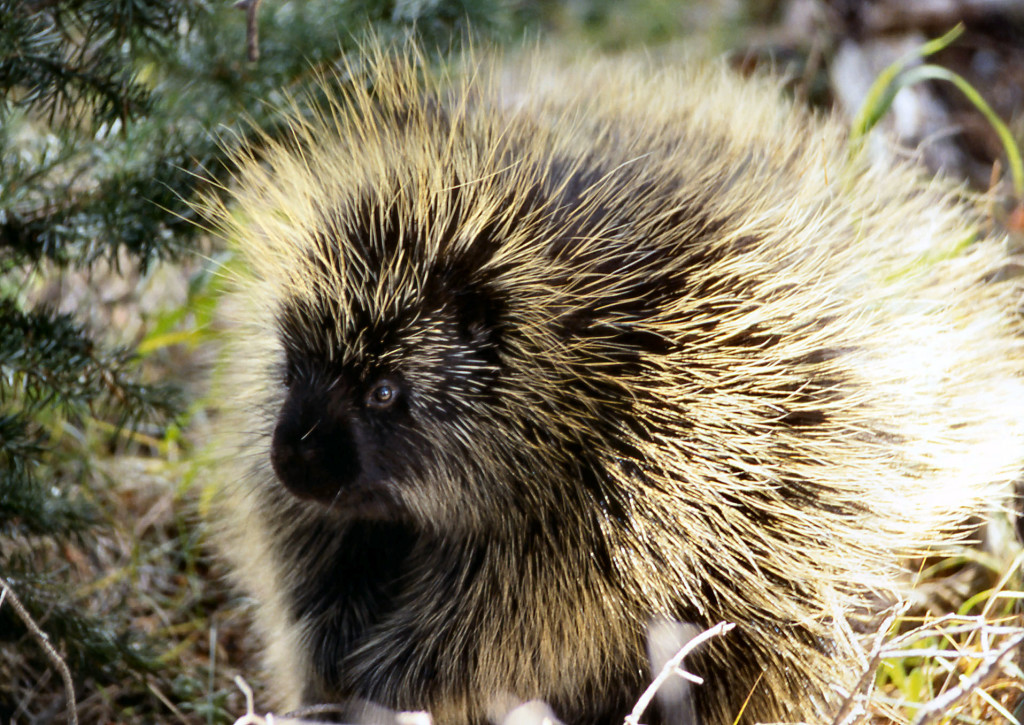
The North American Porcupine, sometimes called a ‘quill pig’ or Canadian porcupine, is common in the pacific northwest, and especially in the coastal woodland regions. They are caviomorphs, being related to capybara, chinchillas, guinea pigs, and another rodent on our list today, nutria. Out of all the North American rodents on our list, porcupines possess the highest intelligence and easily live the longest, at around a decade. They are excellent climbers due to their long claws and nimble bodies, and can be seen at all times of day or night (though are more prevalent at night). The size of a small-to-mid-sized dog, and covered with quills, porcupines can be a startling sight if you’ve never run into one before. They are the second largest rodent in North America (second only to the beaver). They are between 2-3 feet long, with a long, “furry” tail (smaller, densely packed quills). They have tens of thousands of quills on their bodies, each one having microscopic barbs that can help the quill to dig deep into the porcupine’s attackers.
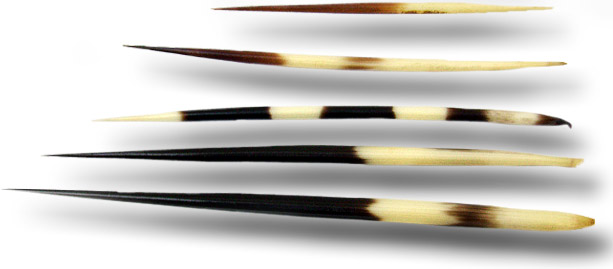
Porcupines are herbivores, preferring to eat bark, harder and more fibrous plant matter, antlers, and also twigs, flowers, and berries. They prefer woodlands, and especially areas near wetlands, though they can also be found (though rarely) in rocky or dry, desert-like habitats. Contrary to popular belief, the porcupine cannot “shoot” its quills out. They will fan out and make the porcupine look much larger when it is threatened, as a defensive characteristic, but they cannot be fired out of its body. The way these spines end up in other animals is due primarily to the other animal rubbing or pushing against them. The quills are strictly defensive. Another popular thought about porcupines is that they are related to hedgehogs. This is due to both animals having a quill-like appearance, but the two are not closely related at all (hedgehogs are omnivores and are far more closely related to moles than porcupines).
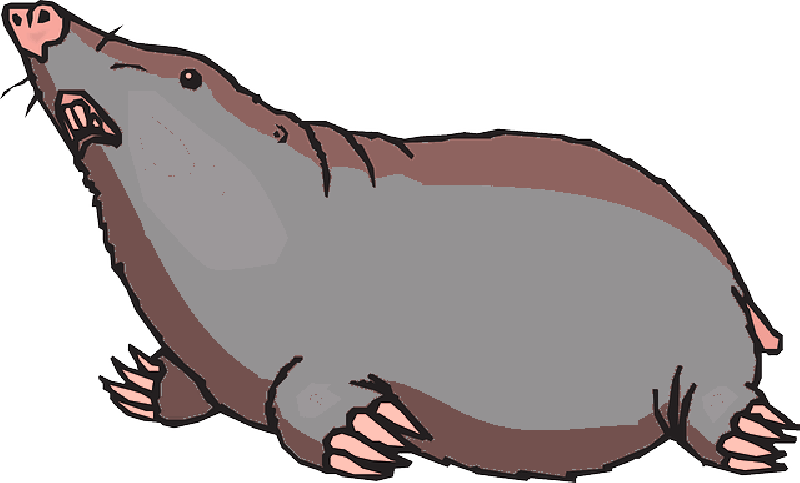
Another interesting aspect of porcupine life is their patient reproductive cycle. They mate only in the late year, from November to December, will carry their young for 7 months, and give birth to only one new offspring. This reproductive cycle keeps the porcupine from being as prevalent as many of the other rodents we’ve covered. The mating procedure involves a complex dance performed by the male, which culminates into a finale that includes the male urinating on the female’s head.
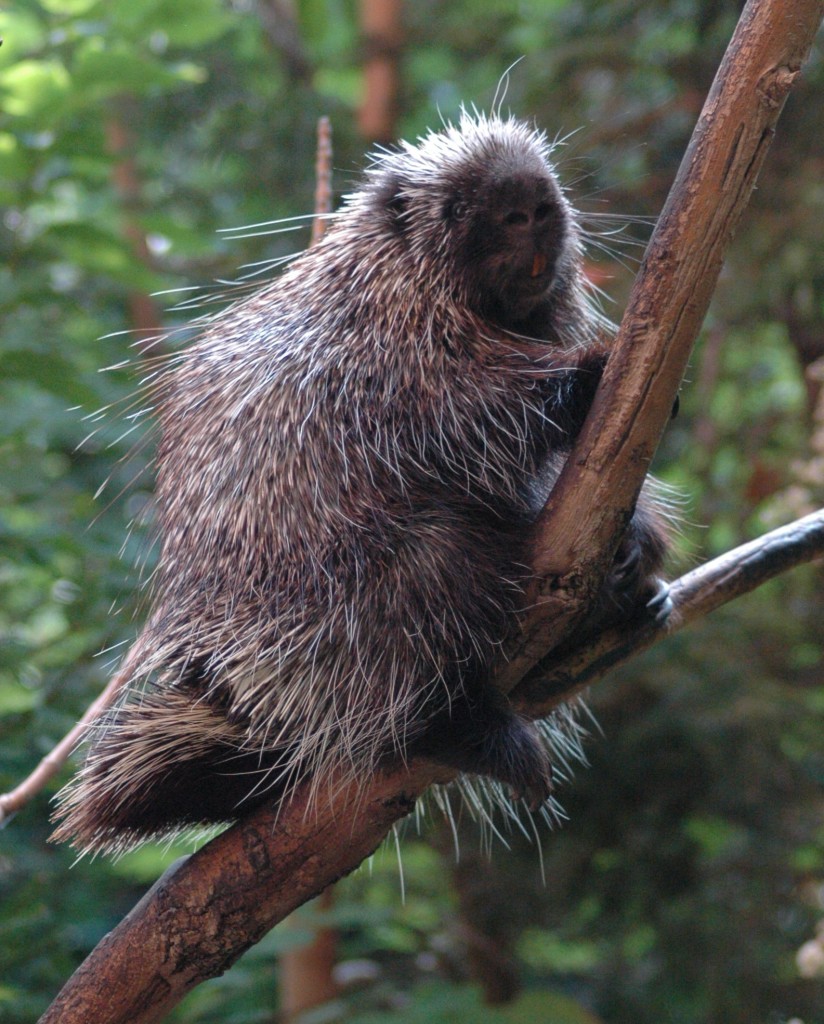
They typically cannot overrun an area by reproducing, especially since they have a variety of predators, like larger birds of prey, coyotes, and even dogs. Due to their solitary nature, even the risk of being run over in the road can be a significant control for their numbers in an area. If you are having a porcupine problem (perhaps injuries to your pets), there are several methods for controlling them near or within your property or yard. A good place to start is with exclusion or trapping. Information on these methods can be found here.
That said, if you’re having trouble with some of the more typical rodents, like rats or mice, we can definitely handle that for you. Bug Zapper Pest Control deals with rodents daily, and our strategy for ridding your home of these pests can speak for itself. Your home is different from the homes that surround it, and every mouse or rat infestation concerns unique details that need to be taken into consideration to stage a successful treatment plan. We’ll customize a mouse removal plan that suits the details of your home and surrounding environment.
5 Star Pest Control Service available in Albany, Ashland, Corvallis, Eugene, Grants Pass, McMinnville, Medford, Newberg, Roseburg, Salem, Sherwood, Wilsonville, Woodburn, Tigard, Tualatin and surrounding areas.



